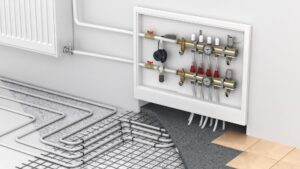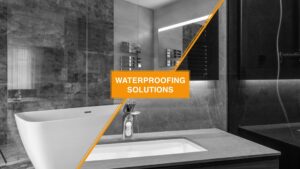This month, Jim Percival, technical director at Palace Chemicals, considers that potential scourge of tiled surfaces – efflorescence, and advises that, although it can ruin the aesthetic appearance of an otherwise good tiling job, it is actually a natural occurrence, which isn’t actually the fault of the grout itself. Its effects can be mitigated by following a few careful steps.
It is important to understand what causes efflorescence, the tell-tale trail of white salt deposits that can appear on a tiled surface or indeed any other surface where cement is involved, either in the covering material or in the substrate.
The salts can precipitate out on to the surface of bricks, tiles, mortars and grouts. The deposits are chemical compounds which occur when water soluble salts form on the surface, normally carbonates, sulphates or chlorides of calcium, sodium and potassium. In Portland cements, the most common form is calcium carbonate.
In itself efflorescence is not damaging to the grout and the effect is purely aesthetic. Efflorescence is usually encountered in new or recent constructions and is more likely to appear at certain times of the year in the UK, especially during colder temperatures. The problem is more likely to occur with porcelain tiles than with ceramic because porcelain tiles are impervious and do not absorb moisture, as ceramic tiles will.
So how do you prevent it? In truth you can never be absolutely sure you have prevented it entirely, as it is caused by an almost inevitable reaction when cement or cement-based products are used. However there are a number of steps which can be taken to minimise and control it.
Firstly ensure that your substrate is dry. That will necessitate the installation of a Damp Proof Course (DPC) in the wall and a Damp Proof Membrane (DPM) within any floor build-up – either under the screed or the concrete.
Secondly, the colder the air temperature, the colder the backgrounds and bases. For any construction material containing cement, the rate of cement hydration and the rate at which residual moisture is lost will decrease in cold site temperatures, particularly at temperatures below 10°C. It should also be noted that BS 5385-4 does not recommended tiling below 5°C.
Thirdly, since moisture is a key factor in the development of efflorescence, great care should be taken not to include too much water in the mix of either the tile adhesive or the grout. An excess of moisture will cause the migration of natural salts within the cement to the grout surface. Manufacturers’ recommendations should be adhered to in order to ensure the mix is correct.
Fourthly the cleaning off process should be carried out with care and without the use of excessive water which will again encourage the movement of salts towards the surface of the grout, especially where it is allowed to remain in the grout joints for a pronged drying period.
There are Portland Cement-free grouts which can be used, based on alternative cement binders with a very low free-lime and soluble salt content, thus minimising migration of efflorescence to the tile joint surface and allowing the originally intended colour to remain as intended. Resin-based Epoxy grouts are the most efflorescence-free option, but they require greater care and control during the application process and additional health and safety precautions.
If efflorescence does form on a newly tiled surface, all is not necessarily lost. The first thing to do is to wait until the installation is totally dry and then wash with water, which may be required repeatedly before the inner soluble deposits have fully migrated out of the mortar joint and virtually disappeared.
If repeated washing does not get rid of the problem, there are treatments, generally acid-based, which are possible. Palace offers a Grout Film Remover which can be sponge or brush applied to remove limescale and efflorescence from tiled surfaces. There are limitations however regarding the types of tiled surfaces that can be treated with these types of solutions, which should not be used on marble or calcareous stone.
If the problem appears to be persistent water ingress either from exposure to weather or other external sources, then the use of an impregnating sealer will protect a semi-porous tile mortar joint from penetrating moisture ingress and consequential contaminant absorption. A proprietary impregnating sealer will form a water repellent effect on the grout surface which restricts moisture ingress and dirt accumulation and also minimises the ‘wet to dry’ cycle of drying out and moisture release which can result in a more prolonged accumulation of surface salt deposits and efflorescence on the exposed grout joint face.





